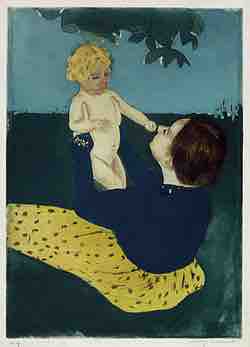The relationships adolescents have with their peers, family, and members of their social sphere play a vital role in their development. Adolescence is a crucial period in social development, as adolescents can be easily swayed by their close relationships. Research shows there are four main types of relationships that influence an adolescent: parents, peers, community, and society.
Parental Relationships
When children go through puberty in the United States, there is often a significant increase in parent-child conflict and a decrease in cohesive familial bonding. Arguments often concern new issues of control, such as curfew, acceptable clothing, and the right to privacy. Parent-adolescent disagreement also increases as friends demonstrate a greater impact on the child; this is especially true when parents do not approve of new friends' values or behavior.

The parent-child relationship
When children go through puberty, there is often a significant increase in parent-child conflict.
While adolescents strive for freedom, the unknowns can be frightening for parents. Although conflicts between children and parents increase during adolescence, they are often related to relatively minor issues; regarding more important life issues, many adolescents will still share the same attitudes and values as their parents. Adolescents who have a good relationship with their parents are less likely to engage in various risky behaviors, such as smoking, drinking, fighting, and/or unprotected sex.
Peer Relationships
As adolescents work to form their identities, they pull away from their parents, and the peer group becomes very important (Shanahan, McHale, Osgood, & Crouter, 2007). The level of influence that peers can have over an adolescent makes these relationships particularly important in personal development. As children begin to create bonds with various people, they start to form friendships; high quality friendships may enhance a child's development regardless of the particular characteristics of those friends. Adolescents associate with friends of the opposite sex much more than in childhood and tend to identify with larger groups of peers based on shared characteristics.
Peer groups offer members of the group the opportunity to develop social skills such as empathy, sharing, and leadership. Peer groups can have positive influences on an individual, such as academic motivation and performance; however, they can also have negative influences, such as peer pressure to engage in drug use, drinking, vandalism, stealing, or other risky behavior. Susceptibility to peer pressure increases during early adolescence, and while peers may facilitate positive social development for one another, they may also hinder it. Emotional reactions to problems and emotional instability—both characteristic of the hormonal changes in adolescence—have been linked with physical aggression among peers. Research has linked both physical and relational aggression to a vast number of enduring psychological difficulties, including depression.
Community, Society, and Culture
There are certain characteristics of adolescent development that are more rooted in culture than in human biology or cognitive structures. Culture is learned and socially shared, and it affects all aspects of an individual's life. Social responsibilities, sexual expression, and belief-system development, for instance, are all likely to vary based on culture. Furthermore, many distinguishing characteristics of an individual (such as dress, employment, recreation, and language) are all products of culture.

Culture
Culture is learned and socially shared, and it affects all aspects of an individual's life. Social responsibilities, sexual expression, and belief-system development, for instance, are all things that are likely to vary by culture.
Many factors that shape adolescent development vary by culture. For instance, the degree to which adolescents are perceived as autonomous, or independent, beings varies widely in different cultures, as do the behaviors that represent this emerging autonomy. The lifestyle of an adolescent in a given culture is also profoundly shaped by the roles and responsibilities he or she is expected to assume. The extent to which an adolescent is expected to share family responsibilities, for example, is one large determining factor in normative adolescent behavior: adolescents in certain cultures are expected to contribute significantly to household chores and responsibilities, while others are given more freedom or come from families with more privilege where responsibilities are fewer. Differences between families in the distribution of financial responsibilities or provision of allowance may reflect various socioeconomic backgrounds, which are further influenced by cultural norms and values.
Adolescents begin to develop unique belief systems through their interaction with social, familial, and cultural environments. These belief systems encompass everything from religion and spirituality to gender, sexuality, work ethics, and politics. The range of attitudes that a culture embraces on a particular topic affects the beliefs, lifestyles, and perceptions of its adolescents, and can have both positive and negative impacts on their development. In the United States and many other parts of the world, lesbian, gay, bisexual, transgender, and queer (LGBTQ) youth face much discrimination and bullying by their peers based on the broader cultural attitudes about LGBTQ issues; many are ostracized from peer groups because they are seen to be breaking culturally based gender norms. This can have a tremendous impact on the development of queer or transgender adolescents, increasing their risk for depression, anxiety, and even suicide. Similarly, early-maturing girls may suffer teasing or sexual harassment related to their developing bodies, contributing to a higher risk of depression, substance abuse, and eating disorders (Ge, Conger, & Elder, 2001; Graber, Lewinsohn, Seeley, & Brooks-Gunn, 1997; Striegel-Moore & Cachelin, 1999).